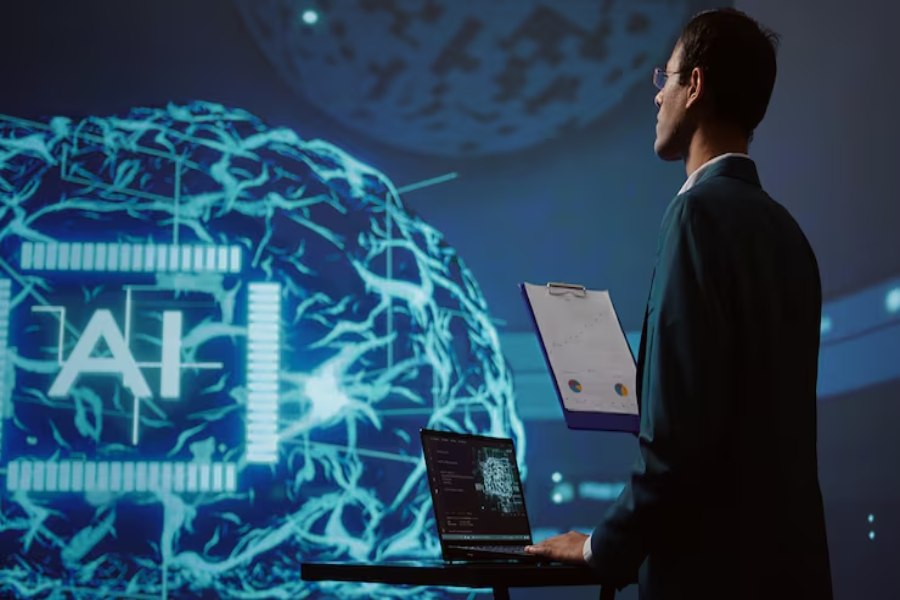Why Educational Institutions Are Turning to AI for Video Redaction and Compliance

In recent years, educational institutions have seen a significant rise in the use of video as a teaching tool, offering everything from lectures to virtual tours. However, this increasing reliance on video also brings new challenges, particularly regarding compliance with privacy laws and protecting sensitive information. The solution for many institutions lies in the integration of AI-driven video redaction technologies.
As the demand for streamlined processes grows, many institutions are turning to redaction tools for academic institutions to ensure that their video content protects student privacy while remaining compliant with regulations. This blend of technology and educational values not only simplifies the compliance process but also enhances the learning experience.
The Need for Video Redaction
Protecting Personal Information
With the rise of online and hybrid learning, a plethora of video content is being generated. This includes recordings of lectures, student interactions, and even assessments. While these resources are invaluable for learning, they often contain sensitive personal information. Whether it’s a student’s face in a classroom video or personal remarks during a virtual discussion, maintaining confidentiality is paramount.
Moreover, laws such as GDPR in the UK impose strict regulations on how personal data should be handled. Institutions need to proactively manage these privacy concerns to avoid hefty fines and reputational damage.
Compliance Challenges
Compliance is not just about adhering to laws; it is about fostering an environment of trust. Students must feel secure that their personal information is being protected. This is where the challenge lies. The manual review and editing of videos for compliance can be an arduous task, requiring significant time and resources that many academic institutions lack.
AI-driven redaction tools are emerging as an efficient solution to this problem. These tools automate the identification and removal of sensitive information from video files, saving time and ensuring consistency in compliance.
The Advantages of AI in Video Redaction
Efficiency and Speed
One of the primary advantages of using AI for video redaction is speed. Traditional methods can be slow and labour-intensive, often requiring a team of individuals to review footage frame by frame. AI tools can process hours of video in a fraction of the time, allowing institutions to maximise their resources.
This increased efficiency enables educators to focus more on delivering quality educational experiences rather than getting bogged down in compliance tasks.
Accuracy and Consistency
Consistency is another critical factor in compliance. Human error can lead to oversights, resulting in non-compliance. AI-driven tools, however, are designed to recognise sensitive data patterns based on predefined criteria, ensuring that redaction is comprehensive and accurate every time.
With varying standards and methods, it can be challenging for multiple reviewers to apply the same level of scrutiny. AI removes this variability, allowing for a uniform approach across all video content.
Cost-Effectiveness
While investing in AI technology may seem daunting, the long-term cost savings are substantial. Institutions can eliminate the need for extensive manpower dedicated to video review and redaction. As the technology continues to improve and become more widely adopted, costs are likely to decrease further, making these solutions more accessible.
Case Studies and Real-World Applications
Several academic institutions have already begun reaping the benefits of AI-driven video redaction. For example, universities that have implemented these technologies report significant improvements in their workflows. One notable case involved a large university that had been struggling with managing recorded lectures. By adopting AI redaction tools, they reduced the time spent on compliance by nearly 70%, freeing up resources for more innovative educational initiatives.
Furthermore, research shows that institutions adopting such technologies have also experienced improved student satisfaction. By ensuring privacy and compliance, students are more likely to engage with digital content, knowing their identities are secure.
Training and Adoption: A Necessary Step
Preparing Faculty
While the advantages of AI-driven redaction tools are clear, it’s essential that institutions ensure their faculty and staff are adequately trained in using these technologies. This requires a commitment to professional development, integrating technology training into existing faculty training programmes.
The transition to using AI tools can be daunting, but a well-informed staff will feel more confident in embracing these changes. Regular workshops, tutorials, and support resources can ease this process significantly.
Building a Culture of Data Protection
Lastly, the integration of AI in video redaction should align with a broader institutional commitment to data protection. Encouraging a culture that prioritises confidentiality will help foster trust within the student body and among staff. This is not just a legal necessity but also a moral imperative for educational institutions.
Conclusion
As educational institutions navigate the complexities of modern teaching and learning environments, AI-driven video redaction offers a promising solution for managing compliance and protecting student privacy. By adopting these technologies, schools can not only enhance their operational efficiency but also create a safer, more secure learning environment.
Investing in AI is not just about complying with regulations, but about embracing a culture of protection and respect for students’ rights. As institutions increasingly recognise the value of these tools, the future of educational compliance looks not only more manageable but also more effective.
Ultimately, the integration of AI in redaction processes is more than an operational decision; it is a commitment to prioritising student welfare in an increasingly digital world. The journey may be challenging, but the rewards—both for institutions and for students—are well worth the investment.
